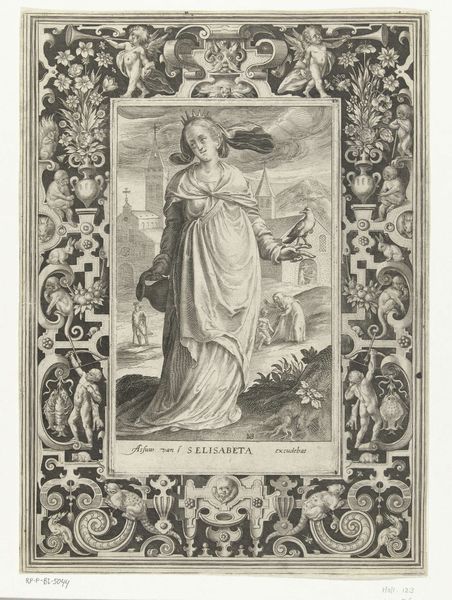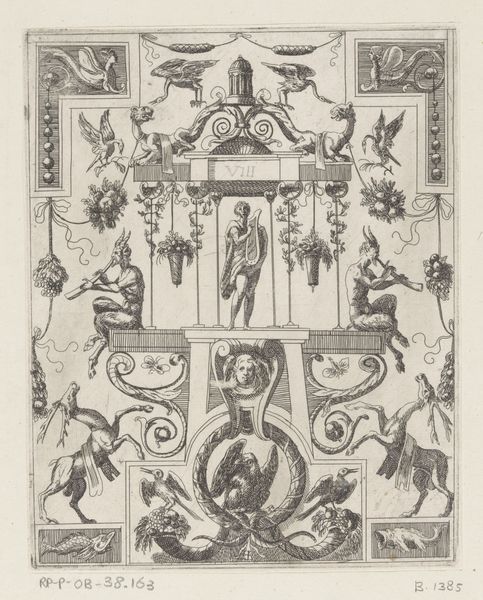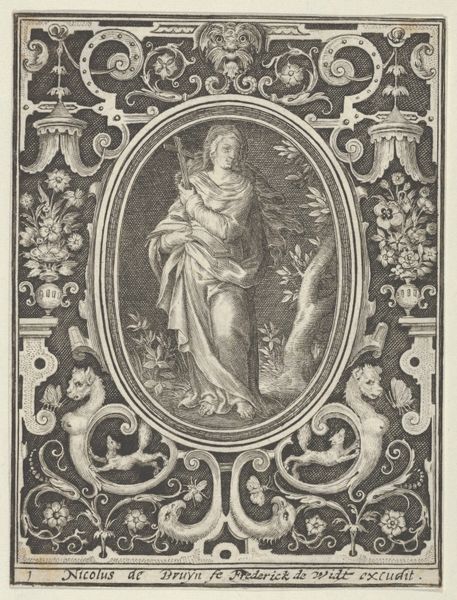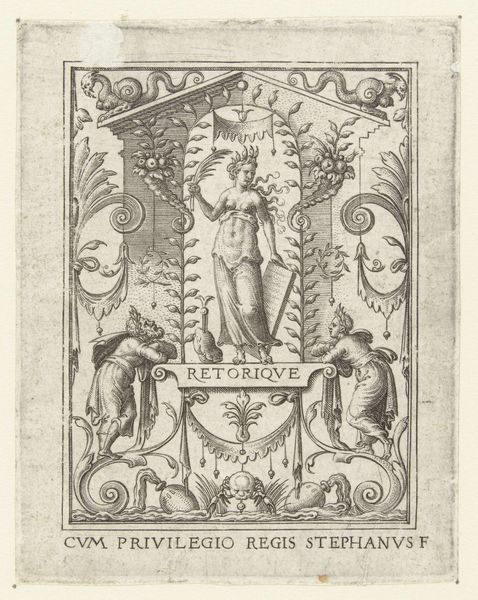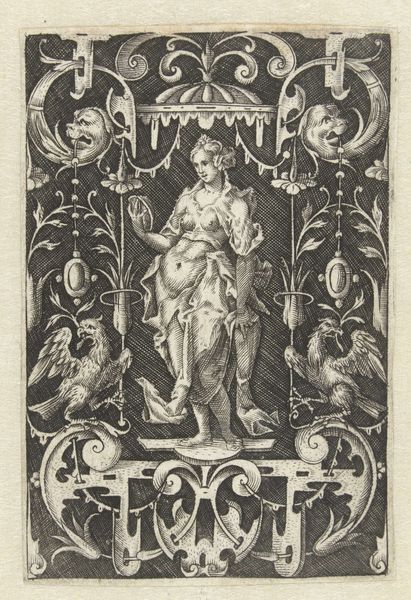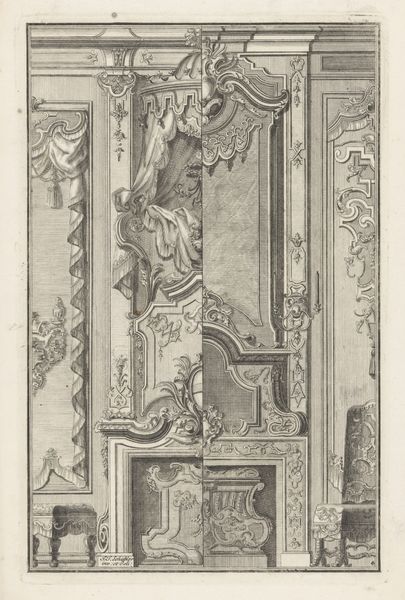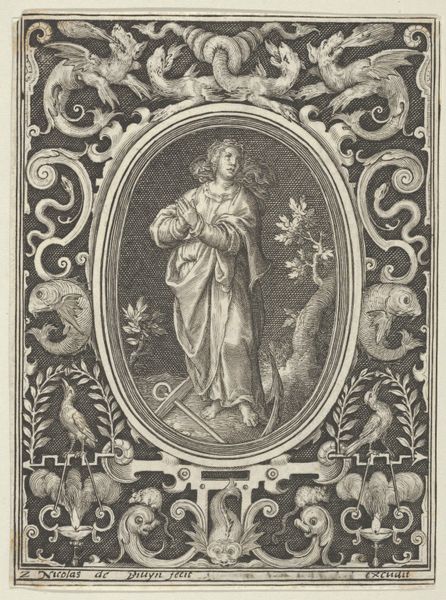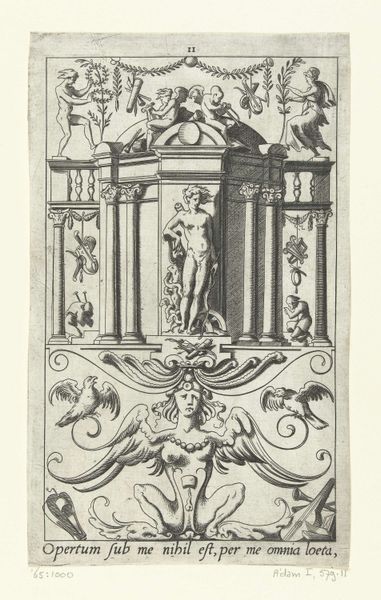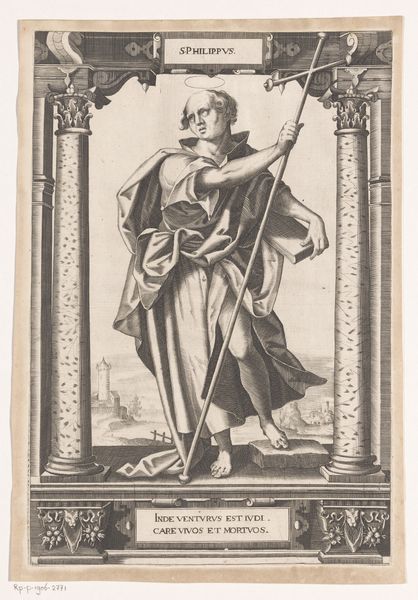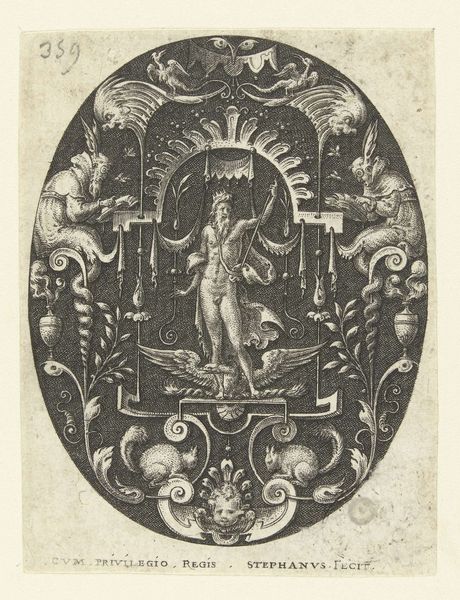
print, intaglio, engraving
#
portrait
#
ink drawing
#
medieval
#
narrative-art
#
pen drawing
# print
#
intaglio
#
mannerism
#
figuration
#
form
#
vanitas
#
line
#
history-painting
#
engraving
Dimensions: height 506 mm, width 396 mm
Copyright: Rijks Museum: Open Domain
Curator: Here we have Luca Bertelli’s "Vanitas," an engraving created in 1578. Editor: Oh, quite stark. The skeleton framing and partially visible within the figure certainly evokes mortality. Curator: It’s a strong visual statement, isn’t it? Bertelli positions this allegorical figure, a partially fleshed-out skeleton, between symbols of earthly life and its inevitable end. Considering its historical context, how do you interpret its imagery? Editor: The skulls, the bones – they speak volumes about the omnipresence of death. The figure itself, both living and skeletal, seems caught between worlds, reflecting perhaps the anxieties of the time. But what strikes me is the almost triumphant, central figure, one hand resting on the skeleton of their chest as they look confidently off to the right as a sun rises in the background. Do you see some optimism or is that just wishful thinking? Curator: Well, I appreciate that optimistic angle. Consider the role prints played during the late Renaissance; the images of the ruling class spread widely, as were depictions of common proverbs, and the public discourse around ideas spread faster than ever before. But images of death also became more commonplace during that era and so could these images serve to act more like talismans of warning, more reminders than affirmations? Editor: I can certainly appreciate the context of public messaging playing a crucial role here, and, of course, you have the Caduceus standing tall behind this figure, held as though it's as important as any scepter from the Renaissance, perhaps offering remedies for all these dire warnings? Curator: Precisely. While prints had various functions, I see how they amplified social anxieties. This piece makes one reflect on how we, both then and now, attempt to reconcile with our mortality and seek some sort of relief in religion and iconography. Editor: The image acts as a historical echo, then, reverberating through time, reminding us that symbols and anxieties don't always change as much as we think they do. Curator: A sober, if rather ornate, reminder, wouldn't you agree? Editor: Indeed. And one that still holds potent meaning.
Comments
No comments
Be the first to comment and join the conversation on the ultimate creative platform.
